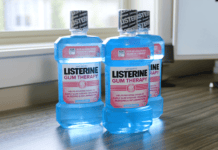Sulfa allergies and sulfite allergies are sometimes confused during conversations with dental patients. The names are very similar, and patients can be uncertain about which allergy they experience. This misperception has the potential to result in an overcautious approach when choosing the proper dental anesthetic for patients, as well as possibly an incorrect antibiotic regimen. Conversing with the patient will help determine which allergy they actually have.
What is a Sulfa Drug?
Sulfa drugs, also known as sulfonamides, are antibiotics as well as other drugs used to treat a variety of health conditions such as eye infections or rheumatoid arthritis. Sulfa antibiotics were introduced in 1936.1 The most common sulfa drugs are used as burn creams, vaginal suppositories, eye drops, and to treat infections.1
What is a Sulfa Allergy?
Approximately 3% of people will have an actual allergic reaction to taking sulfa antibiotics. Allergic reactions are more common with sulfa antibiotics than with other sulfa drugs.1 Reaction to sulfonamide antibiotics (sulfonylarylamines) most likely results from multifactorial immunologic and toxic mechanisms.2
Symptoms may include:1
- Rash
- Hives
- Itchy skin
- Itchy eyes
- Breathing issues
- Swollen face
Other sulfa allergy reactions may include:
- Headache
- Insomnia
- Crystalluria (cloudy urine)
- Low blood count
- Anaphylaxis (rarely happens)
At the first sign of such symptoms, patients should contact their medical doctor as soon as possible to avoid a drug hypersensitivity syndrome such as:
Stevens-Johnson syndrome: This syndrome causes the skin to blister and peel off and can be life-threatening.
Sulfonamide drug hypersensitivity syndrome: This starts two weeks after the start of taking the drug and reveals itself as rash, fever, and/or organ problems.
Drug eruption: Thirty minutes to eight hours after the start of taking the drug, red and swollen patches form on the skin.
Not all sulfa drugs cause an allergic reaction, but patients should always inform their doctor of a sulfa allergy before taking any new medications for new conditions. Some drugs used to treat diabetes, migraines, anti-inflammatories, and diuretics may also contain sulfa and pose no allergenic threat.
What Are Sulfites?
Sulfites (also called sulphite or sulfur dioxide) are chemical compounds used to preserve and slow browning in foods such as dried fruit, dried potatoes, wines, other drinks, and medications. The yeast in wines naturally produces sulfites during fermentation, which prevents oxidization and spoiling.3 With a few exceptions, the majority of epinephrine-containing dental anesthetics contain sulfites.
Some sulfite-containing foods include:3
High levels – Wine, dried fruits, grape juices, cocktail onions, and molasses
Moderate-high levels – Vinegar, sauces, gravies, fruit toppings, and dried potatoes
Moderate levels – Corn syrup, cordials, shrimp, mushrooms, avocados, sausages, meats, maple syrup, cheese, pickles, ciders, clam chowder, fruit juices, and soft drinks
What are sulfite allergies? According to the Food and Drug Administration, only 4% of the population experience sulfite allergies.3 It should be noted that sulfite allergies are more common among people who have asthma. They have been implicated in inducing asthma symptoms and anaphylaxis on very rare occasions.4
When a patient’s medical history indicates they have asthma, dig deeper and ask a few questions to see if they have a sulfite allergy as well—either way, when in doubt, consider sulfite-free dental anesthetics as a precaution. Mepivacaine (3%) and prilocaine (4%) are sulfite-free dental anesthetics.5
Some common asthma symptoms (due to bronchial inflammation) are:4
- Wheezing
- Coughing
- Tightness in chest
- Pain in Chest
- Pressure in chest
- Shortness of breath
How Does This Affect Dentistry?
As mentioned, sulfites are added to epinephrine-containing dental anesthetics to prevent the breakdown of epinephrine. The addition of sulfites also lengthens the shelf-life of the anesthetic to more than a year. This preservative is most commonly labeled on the anesthetic carpule as potassium metabisulfite.6
In contrast, sulfite-free dental anesthetics do not contain the vasoconstrictor, epinephrine, and may be selected for short procedures, particularly those involving mandibular block where vasoconstriction is less important. Sulfite-free dental anesthetics [mepivacaine (3%) and prilocaine (4%)] should also be used when epinephrine must be avoided in patients who have severe heart disease.2
In conclusion, if a patient suspects that they may have a sulfite allergy, simply do not use an anesthetic containing epinephrine. Local anesthetics that do not contain epinephrine do not contain the sulfite preservative potassium metabisulfite.6
Remember that a sulfa allergy and sulfite allergy (or sensitivity) is totally different and unrelated. If you have an allergy to sulfa drugs, it does not mean that you are allergic or sensitive to sulfite foods or preservatives.6This statement can be reversed as well. If you have a sensitivity or allergy to sulfites, you are not necessarily allergic to sulfa. A key point to remember is that the correlation between asthma and sulfites is closely linked.
Now Check Out the Peer-Reviewed, Self-Study CE Courses from Today’s RDH!
Listen to the Today’s RDH Dental Hygiene Podcast Below:
References
- Cristol, H. (2020, August 5). Sulfa Allergy. WebMD. https://www.webmd.com/allergies/sulfa-allergies
- Dibbern, D.A., Montanaro, A. Allergies to sulfonamide antibiotics and sulfur-containing drugs. Annals of Allergy, Asthma & Immunology. 2008; 100(2): 91-100. https://pubmed.ncbi.nlm.nih.gov/18320910/
- Heiligenthal, P. (2020, June 20). Wine & Sulfites: The Truth about Red Wine Headaches. Enobytes. https://www.enobytes.com/2007/05/06/red-wine-sulfites/
- Sulfite Sensitivity. (2020, October 16). Cleveland Clinic. https://my.clevelandclinic.org/health/articles/11323-sulfite-sensitivity
- Haas, D.A. An update on local anesthetics in dentistry. J Can Dent Assoc. 2002; 68(9): 546-551. https://www.cda-adc.ca/jcda/vol-68/issue-9/546.pdf
- Calacaterra, N. (2014, August 23). Novocaine Allergy Part II –Methylparaben and Sulfites. Directions in Dentistry. https://directionsindentistry.net/novocaine-allergy-part-ii-methylparaben-sulfites/












